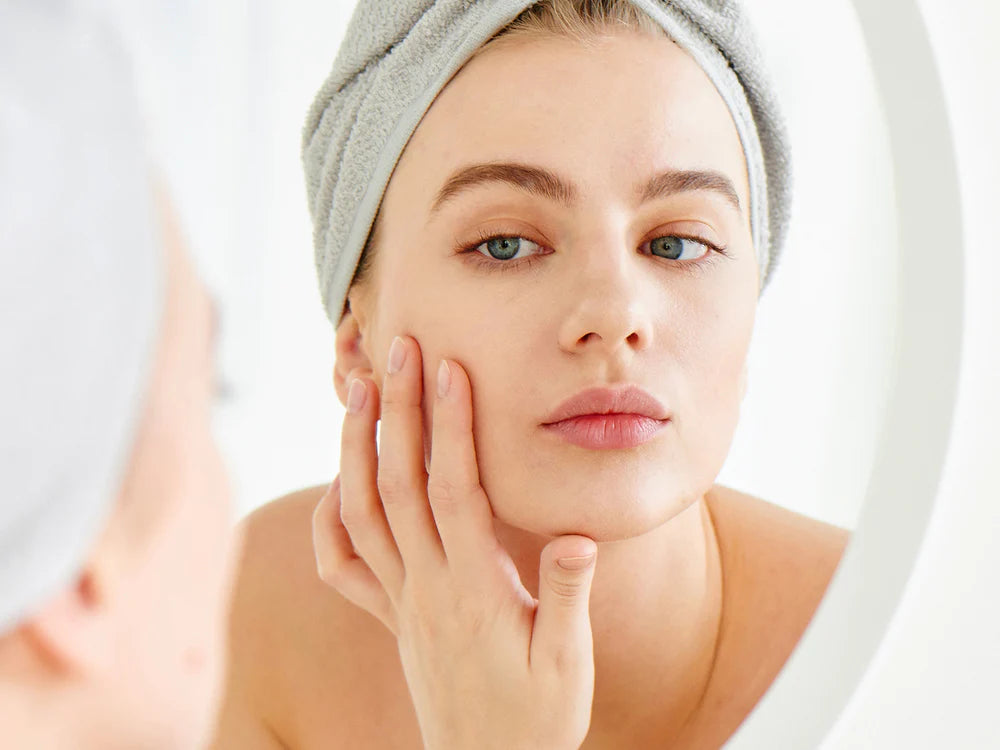
Comedogenic
What is Comedogenic?
"Comedogenic" refers to substances or ingredients that have the potential to clog pores and contribute to the formation of comedones, which are non-inflammatory acne lesions. Comedones can manifest as whiteheads or blackheads and are a result of blocked hair follicles.
Certain skincare and cosmetic products contain ingredients that, when applied to the skin, may increase the likelihood of pore blockage. These ingredients are labeled as comedogenic. Understanding the comedogenicity of ingredients is particularly important for individuals prone to acne or those with sensitive skin.
Individuals with acne-prone or sensitive skin need to check product labels for comedogenic ingredients and choose non-comedogenic products. Non-comedogenic products are formulated to minimize the likelihood of clogging pores and causing acne breakouts.
How Do You Know if Ingredients are Comedogenic?
Determining whether ingredients are comedogenic involves understanding the specific properties of those ingredients and their potential to clog pores. Here are some ways to assess the comedogenicity of ingredients:
- Comedogenicity Ratings: Many skincare and cosmetic ingredients have comedogenicity ratings on a scale from 0 to 5. This scale indicates the likelihood of the ingredient causing pore blockage, with 0 being non-comedogenic and 5 being highly comedogenic. Keep in mind that these ratings are not absolute and can vary depending on individual skin types and formulations.
- Ingredient Lists: Check the ingredient lists of skincare and cosmetic products. Look for common comedogenic ingredients and their concentrations in the product. Some ingredients are more likely to cause issues for certain individuals, so understanding your skin's sensitivity is crucial.
- Patch Testing: Perform patch tests when trying new products. Apply a small amount of the product containing the ingredient in question to a discreet area of your skin and observe for any adverse reactions over a few days. This helps you assess how your skin reacts to the specific formulation.
- Research and Reviews: Research ingredients and read product reviews. Online resources and databases can provide information on the comedogenicity of various ingredients. However, be cautious and rely on reputable sources for accurate information.
- Know Your Skin Type: Different skin types react differently to ingredients. Oily or acne-prone skin may be more susceptible to comedogenic ingredients, while individuals with dry or sensitive skin may have different tolerance levels. Understanding your skin type helps in choosing products that suit your needs.

Common Comedogenic Ingredients to Watch For:
- Mineral oil
- Isopropyl myristate
- Algae extract
- Coconut oil
- Cocoa butter
- Sodium lauryl sulfate (SLS)
- Shea butter
- Lanolin
- Certain types of silicones
What is Comedogenic Ingredients Rate?
The comedogenic rating is a scale that indicates the likelihood of an ingredient or substance clogging pores and contributing to the formation of comedones, which are non-inflammatory acne lesions. The scale is typically rated from 0 to 5, with 0 being non-comedogenic (unlikely to cause pore blockage) and 5 being highly comedogenic (likely to cause pore blockage).
Here is a general breakdown of the comedogenic rating scale:
- 0 - Non-Comedogenic: Ingredients with a rating of 0 are considered unlikely to clog pores and are suitable for individuals with acne-prone or sensitive skin.
- 1 - Low Comedogenicity: Ingredients with a rating of 1 have a low likelihood of causing pore blockage. They are generally safe for most skin types.
- 2 - Moderately Comedogenic: Ingredients with a rating of 2 may have a moderate potential to clog pores. Individuals with acne-prone skin should use these ingredients with caution.
- 3 - Moderately to Highly Comedogenic: Ingredients with a rating of 3 may have a moderate to high likelihood of causing pore blockage. Those with acne-prone skin should approach these ingredients carefully.
- 4 - Highly Comedogenic: Ingredients with a rating of 4 are considered highly likely to clog pores. These ingredients may not be suitable for individuals with acne-prone or sensitive skin.
- 5 - Extremely Comedogenic: Ingredients with a rating of 5 are considered very likely to clog pores. They are generally not recommended for individuals with acne-prone or sensitive skin.
It's important to note that comedogenic ratings are not an exact science, and individual skin reactions can vary. Factors such as skin type, genetics, and other ingredients in a product can influence how a particular ingredient interacts with the skin.
The Benefits of Non-Comedogenic Ingredients
Non-comedogenic ingredients offer several benefits for individuals with acne-prone or sensitive skin. Here are some key advantages:
- Reduced Pore Blockage: Non-comedogenic ingredients are less likely to clog pores. This helps prevent the formation of comedones, such as whiteheads and blackheads, which are common in individuals with acne-prone skin.
- Decreased Risk of Acne Breakouts: Using products with non-comedogenic ingredients reduces the risk of acne breakouts. These ingredients are formulated to be gentle on the skin and less likely to contribute to the development of pimples, pustules, and cystic acne.
- Suitable for Sensitive Skin: Non-comedogenic products are often formulated with sensitivity in mind. They are less likely to cause irritation, redness, or inflammation, making them suitable for individuals with sensitive or easily irritated skin.
- Hydration Without Pore Clogging: Many non-comedogenic ingredients provide hydration to the skin without clogging pores. This is beneficial for maintaining skin moisture levels without exacerbating acne or other skin conditions.
- Compatibility with Acne Medications: Non-comedogenic products are generally compatible with acne medications and treatments prescribed by dermatologists. They can complement medical interventions without interfering with the effectiveness of acne medications.
- Versatility in Skincare Routine: Non-comedogenic ingredients can be found in a wide range of skincare products, including cleansers, moisturizers, sunscreens, and makeup. This versatility allows individuals to build a comprehensive skincare routine that addresses their specific needs without exacerbating acne.
- Less Likelihood of Allergic Reactions: Non-comedogenic ingredients are typically chosen for their compatibility with various skin types. This reduces the likelihood of allergic reactions, making these products suitable for a broader range of individuals.
- Prevention of Excess Sebum Production: Some non-comedogenic ingredients help regulate sebum (oil) production without causing excessive dryness. This balance is crucial for individuals with oily or combination skin.
- Improved Skin Texture: Non-comedogenic products can contribute to improved skin texture by providing necessary hydration and addressing specific concerns without compromising pore health.






